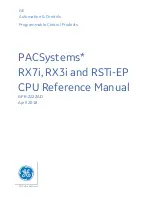
FrSky 2.4GHz ACCST Taranis Q X7S Manual
FrSky 2.4GHz ACCST Taranis Q X7S Manual
FrSky 2.4GHz ACCST Taranis Q X7S Manual
FrSky 2.4GHz ACCST Taranis Q X7S Manual
Thank you for purchasing the FrSky 2.4GHz ACCST Taranis Q X7S digital telemetry radio system. In order to make
the best use of your system and to fly safely, please read this manual carefully. If you have any difficulties while
using your system, please consult the manual, your hobby dealer, or FrSky technical support.
Due to unforeseen changes in production, the information contained in this manual is subject to change without
notice.
Adjust sticks of Taranis Q X7S
Taranis Q X7S has 4 centred sticks
and will not distinguish between the
throttle stick and other sticks.
You can change the stick mode and
feeling according to your need.
Ensure that the battery connector
polarity is correct when connecting
batteries into the battery compartment,
otherwise the Taranis Q X7S might not
be powered on.
Model Name: Taranis Q X7S
Number of channels: 16 channels (Up to 32 channels)
Operating Voltage Range: 6.5~15V (2S, 3S Lipos are acceptable)
Operating Current: [email protected]
Operating Temperature: -10~60
Backlight LCD Screen: 128*64 outdoor readable LCD
Model Memories: 60 (extendable by MicroSD (TF) card)
Compatibility: FrSky receivers in the D8/D16/LR12 mode, Taranis Q X7S-EU version is not compatible with D8 mode.
Please connect a battery in the battery compartment before use.
The voltage range should be DC 6.5~15V.
Be careful not to drop the battery.
Don't pull the battery wires as this could produce short-circuits and may cause the battery to fire even explode.
Do not remove the battery from the TARANIS Q X7S transmitter while the voltage warning is blinking as this could
cause internal settings and memories to be destroyed.
Do not use the transmitter if a “Backup Error” warning occurs.
Model Setup for Taranis Q X7S internal RF Module
Step 1:
Set the Mode for Taranis Q X7S Internal RF
Refer to the table below and set the Taranis Q X7S to the mode corresponding to your receiver (D8, D16 or LR12).
Older V8 series receivers are not supported by the internal module of Taranis Q X7S but can be used with an
external DJT module in V8 mode.
Taranis Q X7S–EU version only has D16-EU and LR12 mode.
Step 2:
Set the
Channel Range
The internal RF module of Taranis Q X7S supports up to 16 channels. The channel range is configurable, and needs
double check before use.
Step 3:
Set the
Receiver Number
When you create a new model, the system will assign you a receiver number automatically, but this can be easily
changed. The range of the receiver number is 00-63, with the default number being 01 (use 00 is not recommended).
Once the receiver is set to the desired number and is bound to the Taranis Q X7S, the bind procedure will not need
to be repeated unless the receiver number is changed, In this case, either set the receiver number to the previous
one or repeat the bind procedure.
Step 4: Bind
Bind refers to Taranis Q X7S binding mode. Move the cursor to
“Bind”
, press
ENTER
button, the cursor will flash
and the speaker will beep to remind you that the RF module has entered the bind mode. Then put your receiver into
binding mode and finish the bind procedure (refer to the receiver’s manual for details).Press
Enter
or
EXIT
to exit.
Step 5:
Set
Failsafe mode
There are 4 failsafe modes: No Pulse, Hold, Custom and receiver (this mode only used above opentx-v2.0.0
firmware).
●
No Pulse: on loss of signal the receiver produces no pulses on any channel. To use this type, select it in the menu
and wait 9 seconds for the failsafe to take effect.
●
Hold: the receiver continues to output the last positions before signal was lost. To use this type, select it in the menu
and wait 9 seconds for the failsafe to take effect.
●
Custom: pre-set to required positions on lost signal. Move the cursor to
“Set”
and press
ENTER,
you will see
FAILSAFE SETTING screen below. Move the cursor to the channel you want to set failsafe on, and press
ENTER.
When moving the corresponding sticks or switches, you will see the channel bar moving. Move the channel bar to the
place you want for failsafe and long press
ENTER
to finish the setting. Wait 9 seconds before the failsafe takes effect.
●Receiver:
set the failsafe on the receiver (see receiver instructions) in D16 or LR12 mode, select it in the menu and
wait 9 seconds for the failsafe to take effect.
Notice:
The above instructions do not apply to D-series receivers, which require the internal RF module of Taranis Q X7S to
be in D8 mode. For these receivers, failsafe must be set on the receiver side (see receiver instructions)
● SBUS port always outputs, No Pulse could not perform prope
rly on it. Set “Hold” or “Custom” for SBUS port.
Step 6: Range
Range refers to Taranis Q X7S range check mode. A pre-flight range check should be done before each flying
session. Move the cursor to
“Range”
and press
ENTER.
In range check mode, the effective distance will be
decreased to 1/30. Press
Enter
or
EXIT
to exit.
Mode of Taranis Q
X7S
Mode of Taranis Q
X7S-EU version
● Hall sensor M7 gimbal
● Receiver Match
● Audio Speech Outputs (values, alarms, settings, etc.)
● Real-time Flight Data Logging
● Receiver Signal Strength Indicator (RSSI) Alerts
● Inbuilt wireless trainer system
● Super Low Latency
● Vibration Alerts
●
Model files are compatible with TARANIS
X9D/X9D Plus/X9E/X7.
● Open source firmware OpenTx installed.
●
Support connect the Free Link App for telemetry
Battery charging port
(adaptive with FCX07)
Danger - No Shorting!
Note - Steps, Tips or information.




















